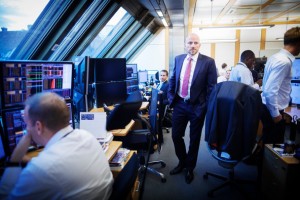I first heard of high-frequency trading (HFT) via Charles Duhigg’s New York Times article in July 2009.
Over the past few years I have investigated facets of HFT. Below is an introductory reading list to HFT and the related area of algorithmic trading, which has recently ‘crossed the chasm’ from institutional to retail investors. It covers an historical overview; some relevant theory; and the use of computer algorithms and machine learning. Large-scale HFT firms spend millions on their computing and technological infrastructure.
The introductory reading list hopefully shows how you can use research skills to Understand a media debate or knowledge domain in greater detail.
This work connects with the Chaos Rules school of thought that I helped write for the Smart Internet 2010 Report (2005). One academic told my boss that Chaos Rules thinking “did not exist.” The two decades long research into HFT — and related areas like Bayesian econometrics and market microstructure — shows otherwise.
HFT Introductions
Dark Pools: The Rise of AI Trading Machines and the Looming Threat to Wall Street by Scott Patterson (Cornerstone Digital, 2012). (TS-3). A history of algorithmic and high-frequency trading on Wall Street, and the emergence of dark pools.
Inside The Black Box: A Simple Guide to Quantitative and High Frequency Trading (2nd ed.) by Rishi K. Narang (John Wiley & Sons, 2012). (TS-3). An introduction to quantitative trading models and coverage of the media debate about high-frequency trading. For a counter-view see Haim Bodek’s The Problem of HFT: Collected Writings on High Frequency Trading and Stock Market Structure Reform (CreateSpace, 2013) (TS-3), who was a source for Patterson’s Dark Pools.
HFT Theory: Bayesian Econometrics, High-Frequency Data, and Machine Learning
Empirical Market Microstructure: The Institutions, Economics, and Econometrics of Securities Trading by Joel Hasbrouck (New York: Oxford University Press, 2007). (TS-4). Hasbrouck explains the empirical approaches to market microstructure that underpin high-frequency trading.
Market Liquidity: Theory, Evidence and Policy by Thierry Foucault, Marco Pagano, and Ailsa Roell (New York: Oxford University Press, 2013). (TS-4). The current debates on how high-frequency trading has affected liquidity and price discovery in markets, and the growth of market microstructure frameworks.
Bayesian Reasoning and Machine Learning by David Barber (New York: Cambridge University Press, 2012). (TS-4). An introduction to Bayesian probability and data analysis using filters and machine learning. For an introduction to machine learning see Peter Flach’s Machine Learning: The Art and Science of Algorithms That Make Sense of Data (New York: Cambridge University Press, 2012) (TS-4).
Econometrics of High-Frequency Data by Nikolaus Hautsch (New York: Springer, 2011). (TS-4). An advanced overview of high-frequency data and relevant econometric models for liquidity, volatility, and market microstructure analysis.
Handbook of Modeling High-Frequency Data in Finance by Frederi G. Viens, Maria C. Mariani, and Ionut Florescu (New York: John Wiley & Sons, 2011). (TS-4). An advanced reference on how to model high-frequency data.
HFT Algorithmic Trading
The Science of Algorithmic Trading and Portfolio Management by Robert Kissell (Academic Press, 2013). (TS-4). An advanced introduction to how algorithmic trading influences market microstructure, and is used for the transaction and execution systems of high-frequency trading. For an earlier introduction see Barry Johnson’s Algorithmic Trading & DMA: An Introduction to Direct Access Trading Strategies (4Myeloma Press, 2010) (TS-4).
Professional Automated Trading: Theory and Practice by Eugene A. Durenard (New York: John Wiley & Sons, 2013). (TS-4). Insights from mathematics and computer science about how to develop, test, and automate the algorithmic trading strategies, using agent-based learning.
Statistically Sound Machine Learning for Algorithmic Trading of Financial Instruments: Developing Predictive-Model-Based Trading Systems Using TSSB by David Aronson and Timothy Masters (CreateSpace, 2013) (TS-4). The authors developed the TSSB software program that uses machine learning to implement algorithmic trading strategies.
